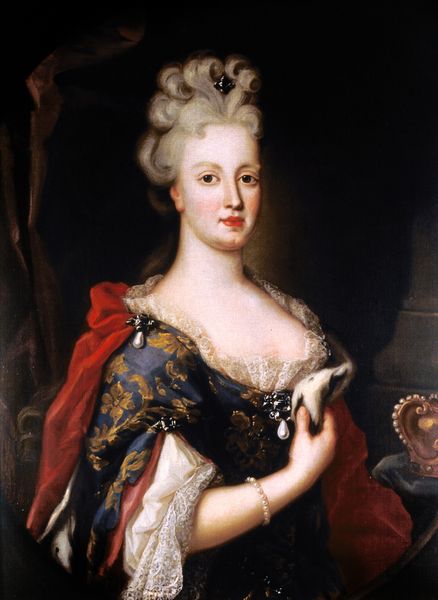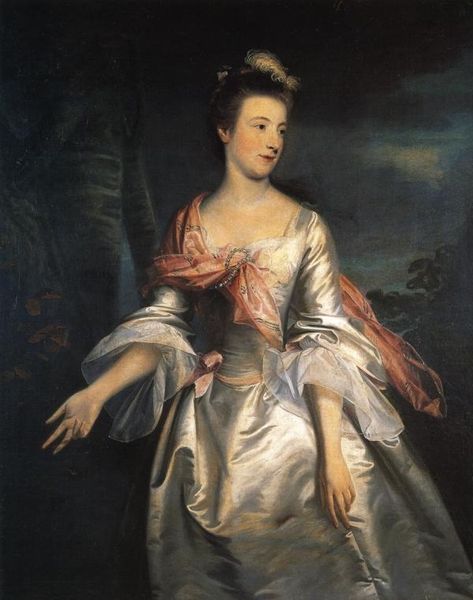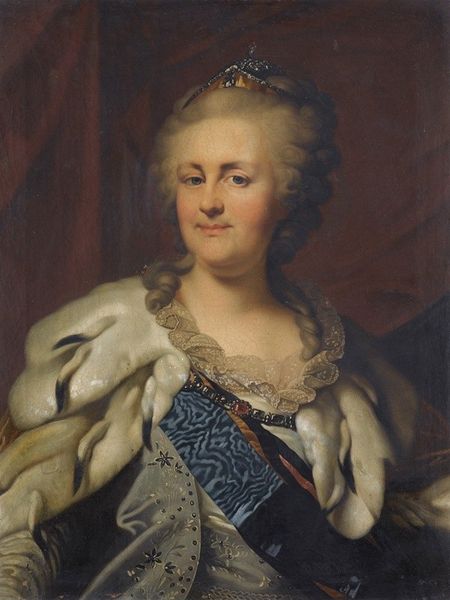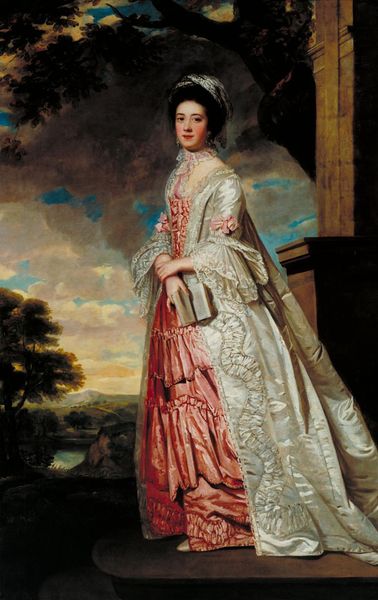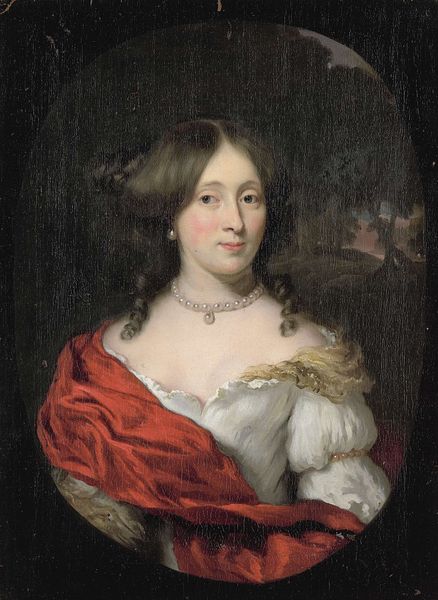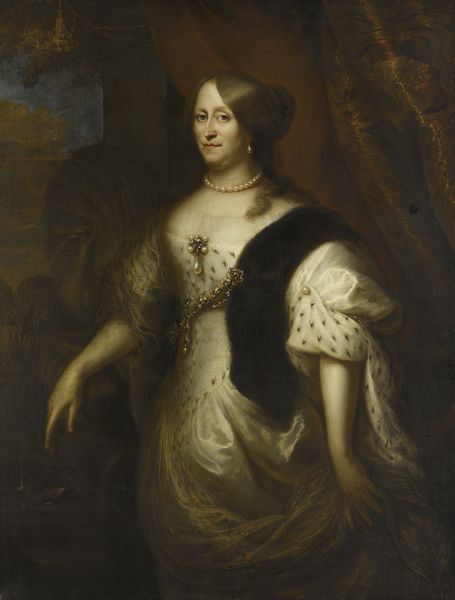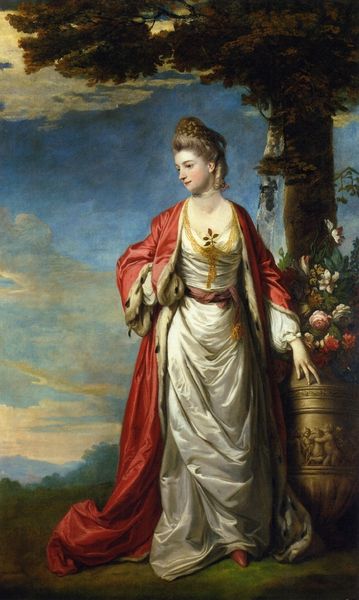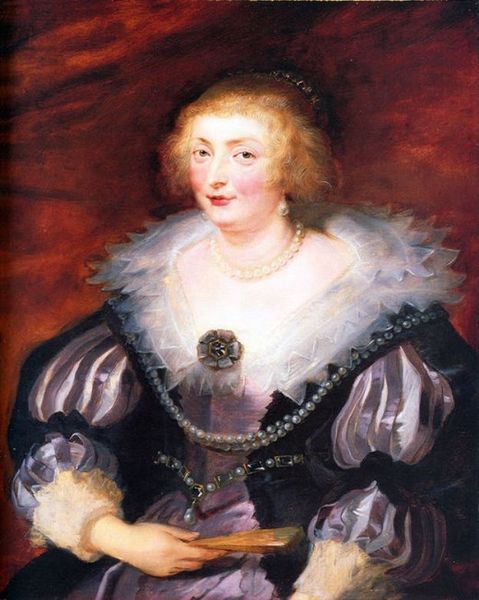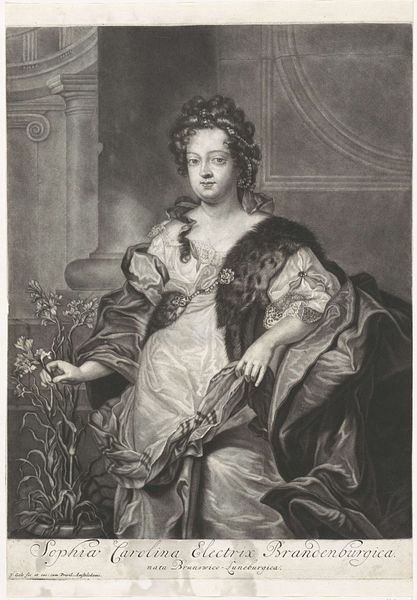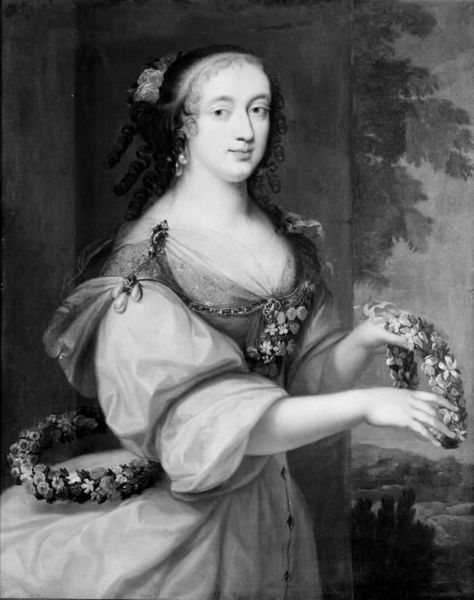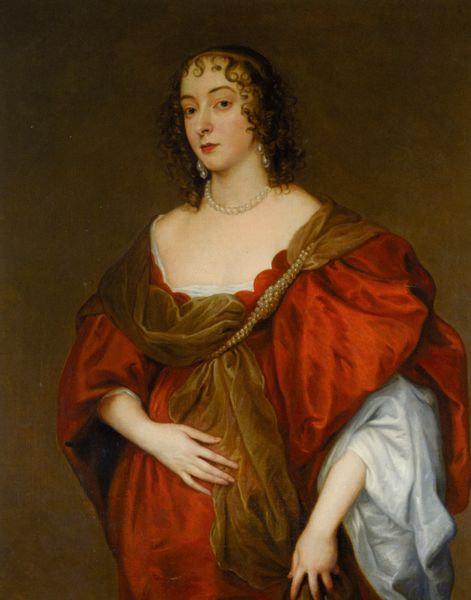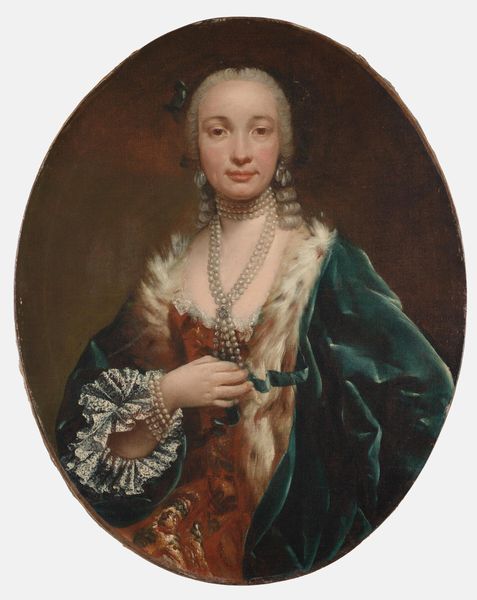
oil-paint
#
portrait
#
oil-paint
#
oil painting
#
romanticism
#
history-painting
Copyright: Public Domain: Artvee
Curator: Here we have Benjamin West’s oil painting, "Elizabeth, Countess of Effingham," created around 1797. Editor: My initial thought is “regal." It's commanding but surprisingly muted. There's a somber feeling that’s hard to ignore. Curator: Absolutely. Note the Countess’s direct gaze. It invites the viewer in while retaining an undeniable sense of aristocratic distance. She’s draped in luxurious red and white fabrics. Editor: It's worth mentioning that pigment would have been costly. Sourcing vibrant reds alone would be a statement of both artistic and literal wealth. Who provided them? Where were these pigments from? Also, I’d love to know about the craftsmanship of her gown! Look at the detail! Curator: I agree. West uses symbolism powerfully. The crown next to her isn't merely a prop; it signifies her noble lineage and inherent authority. The white cloth in her hand alludes to purity and refinement. Her family's honor? Perhaps a veiled comment on society's expectations of noble women at the time? Editor: Interesting that it sits casually next to her hand...almost staged like a magazine still-life, as though commenting on how wealth might simply accrue. What material is the gown exactly? Did the artist prime his canvases in specific ways to draw attention to those shimmering highlights on the silky fabrics? How are these objects coded, through form, texture, and color? Curator: A fascinating take, indeed! Her hand placement seems considered, poised carefully to indicate restraint and elegance. The pearls further embellish her serene grace while being emblems of wealth and high social standing. Editor: Well, that brings me back to the materiality...even those seemingly simple pearls involved laborers and specific processes that are erased here. Art like this naturalizes hierarchies, right? I think we should be asking about labor when viewing it! Curator: Food for thought! West gives us an archetype. Elizabeth, the Countess, frozen in a single historical narrative, forever signifying prestige. Editor: True. It is a powerful piece of material culture that makes clear connections between pigment, labor, class, and enduring ideological frameworks.
Comments
No comments
Be the first to comment and join the conversation on the ultimate creative platform.


